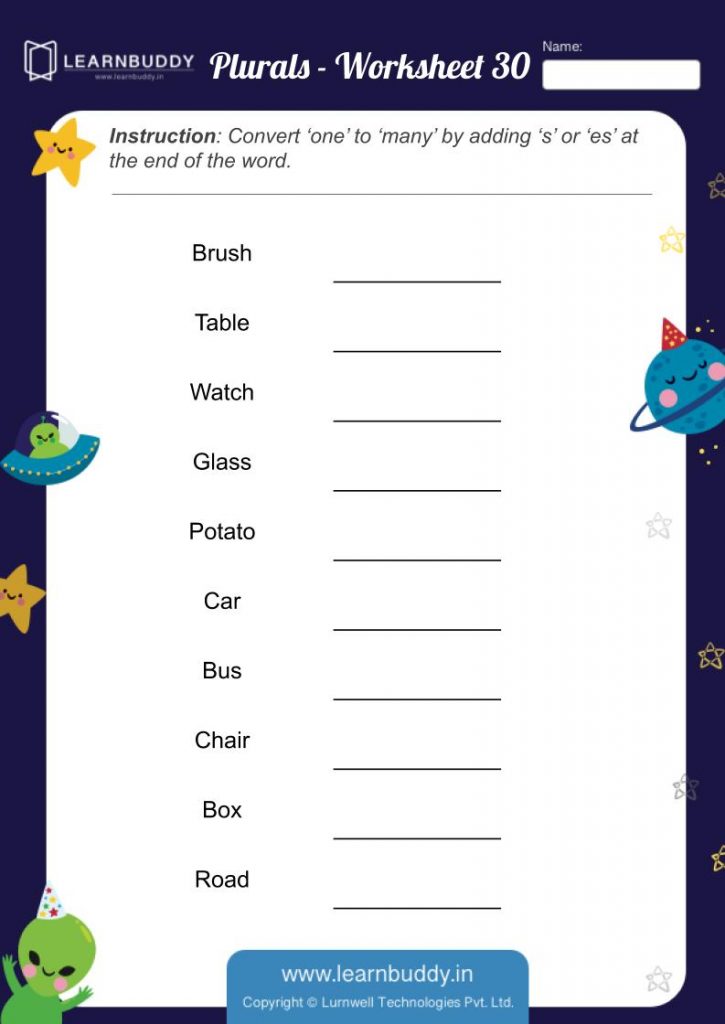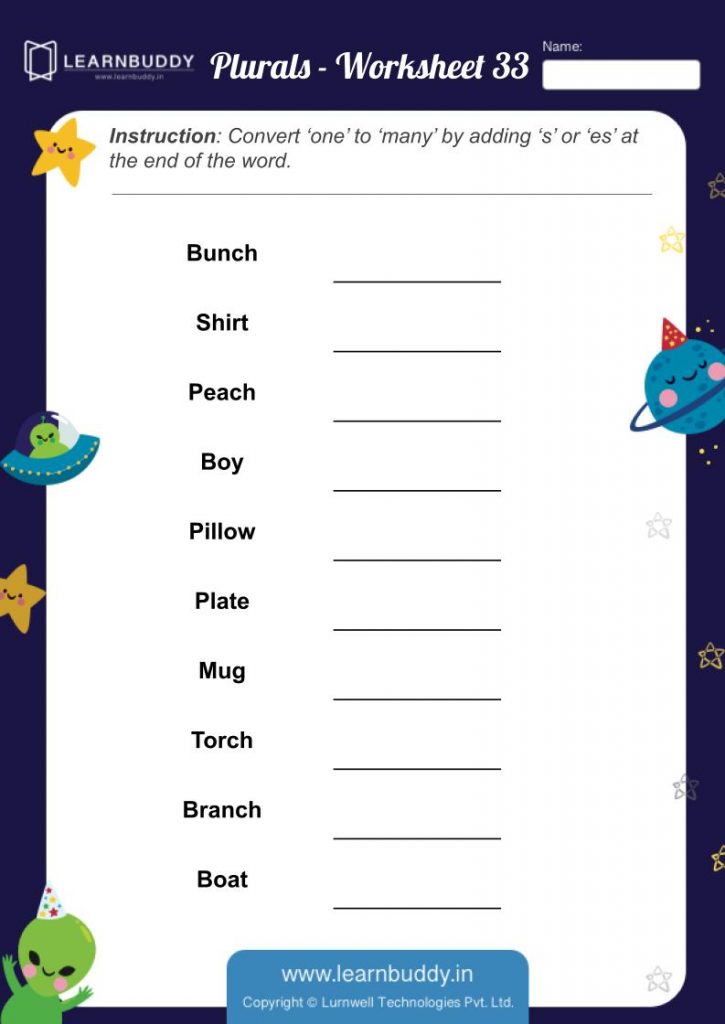Plural nouns are words generally used to denote a quantity other than the default quantity (Singular). Typically default quantity is one (or a singular number) person, animal, place, thing, or idea. The difference between singular (one) and plural (many) nouns is simple.
Below are some of the examples of singular and plural nouns to help you recognize plural nouns when you see them.
- Where a singular noun ends in a sibilant sound he plural is formed by adding ‘-es’ suffix to the word. For example- Watch (Watches), Bus (Buses)
- When the singular form ends in a voiceless consonant the plural is formed by adding ‘-s‘ suffix to the word. For example – Van (Cans), Pot (Pots)
- Singular nouns ending in ‘O’ preceded by a consonant, the plural (in most cases) is formed by adding ‘-es‘ suffix to the word. For Example – Photo 9Photos), piano (Pianos)
- If the noun ends in a vocalic ‘Y’ preceded by a consonant usually the plural is formed by adding ‘-ies‘ suffix to the word. (Exception is proper nouns which add suffix as ‘-s‘). For example – Cherry (Cherries), Lady (Ladies)
- Some of the nouns are exceptions where they have identical singular and plural (Mostly the names of animals) For example – Ox, Deer, Sheep.
Download Worksheets




Download printable “Plurals worksheet for class 1” with answers [PDF File]
[Registration Required]

You may also want to:


